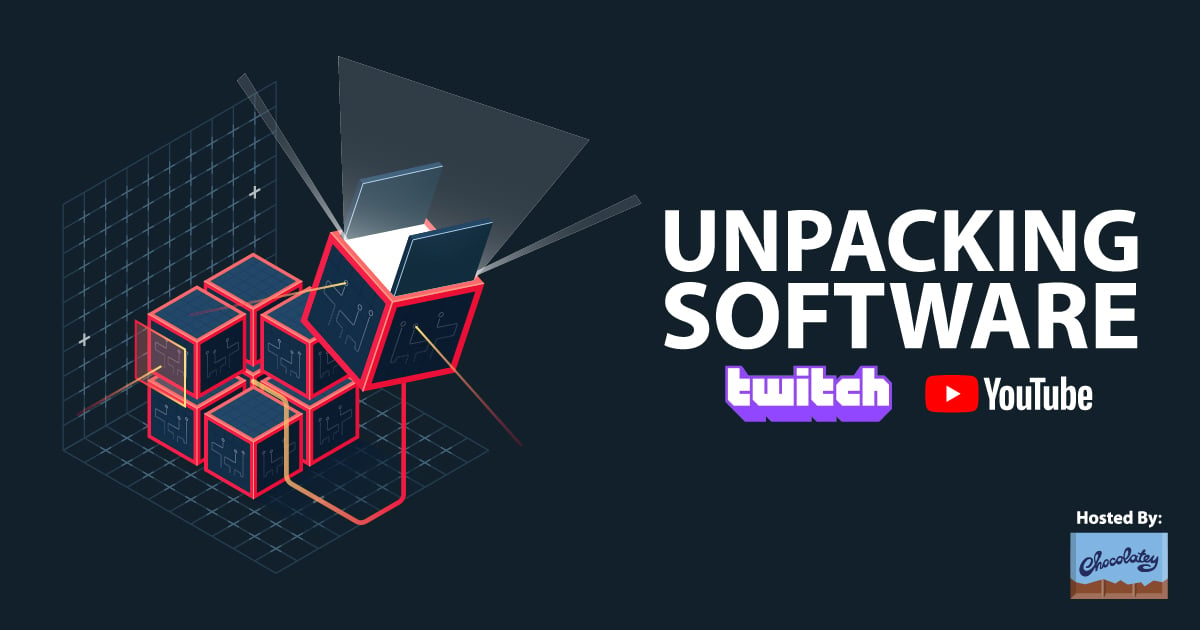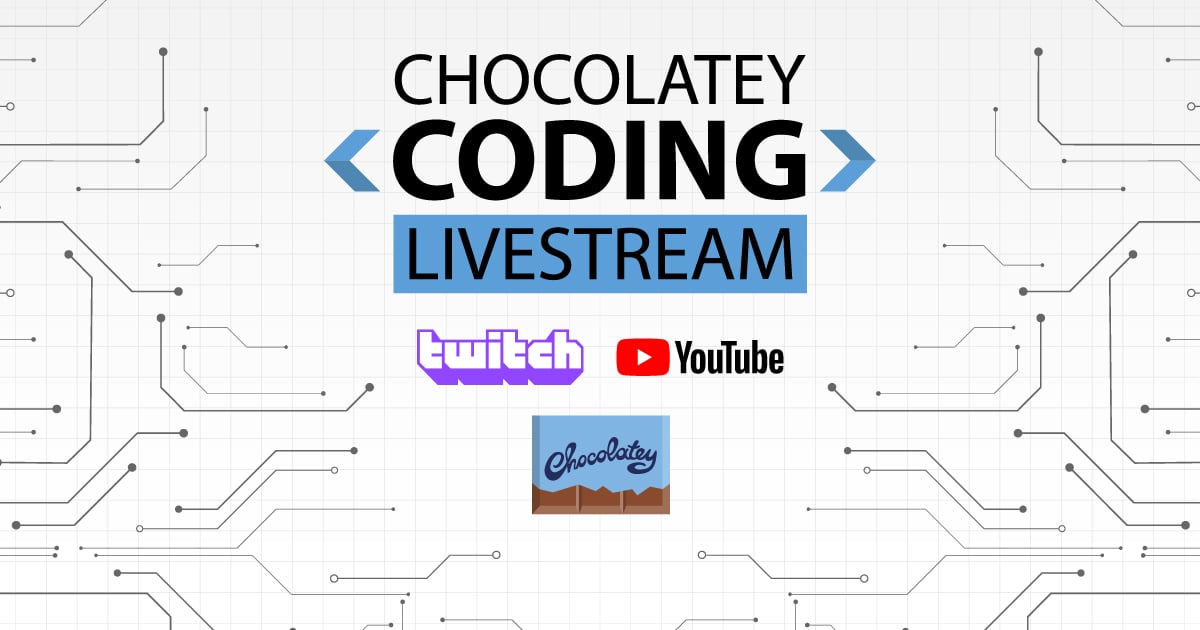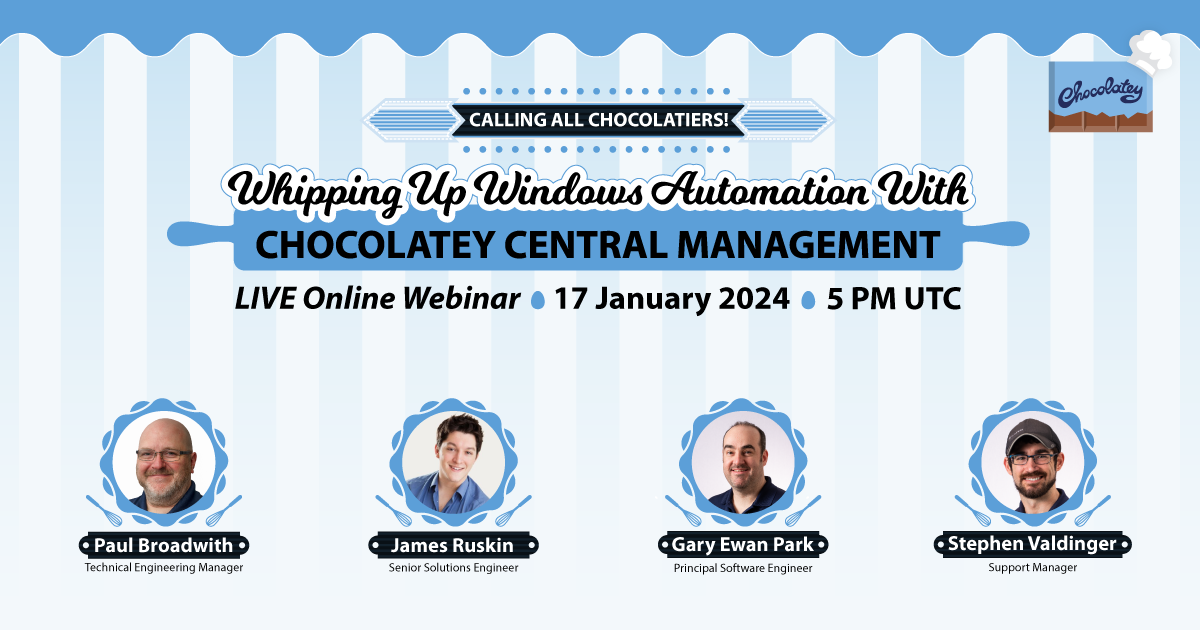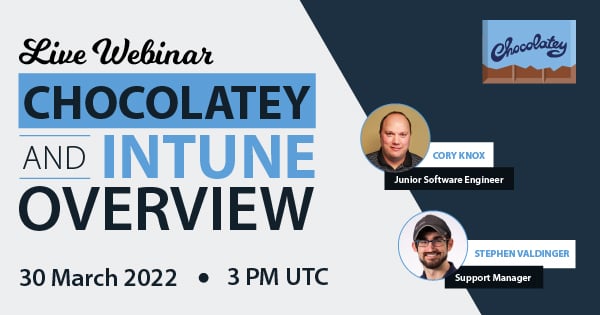
Downloads:
22
Downloads of v 1.29.0:
22
Last Update:
05 Apr 2025
Package Maintainer(s):
Software Author(s):
- Hery Zo
Tags:
videoprojection chant bible chretien- Software Specific:
- Software Site
- Package Specific:
- Package outdated?
- Package broken?
- Contact Maintainers
- Contact Site Admins
- Software Vendor?
- Report Abuse
- Download
videopsalm
- Software Specific:
- Software Site
- Package Specific:
- Package outdated?
- Package broken?
- Contact Maintainers
- Contact Site Admins
- Software Vendor?
- Report Abuse
- Download
Downloads:
22
Downloads of v 1.29.0:
22
Maintainer(s):
Software Author(s):
- Hery Zo
videopsalm
Legal Disclaimer: Neither this package nor Chocolatey Software, Inc. are affiliated with or endorsed by Hery Zo. The inclusion of Hery Zo trademark(s), if any, upon this webpage is solely to identify Hery Zo goods or services and not for commercial purposes.
- 1
- 2
- 3
Some Checks Have Failed or Are Not Yet Complete
Not All Tests Have Passed
This package was rejected on 10 May 2025. The reviewer chocolatey-ops has listed the following reason(s):
Videopsalm is an application used for christian song projection. There are different chirstian songs and the bible. The songa are in different languages,
french, English, Spanish, German. It is possible to add your personal song
md5: E734E6C12291281C3FE626BF2C600B4A | sha1: 83E9F104CF4645A6EFCF43A06F7087BF1FE3CEBB | sha256: 10A2A3A2FD4604F21F7E5A74D1220C84C1AB8B2ACBF8D81F1AA0270BA48454DA | sha512: 1367CFA2AA97FDE25333FEB3B7F096414FA05DCC7E5CA77C7940C02A2C937858D1BE9F1C42C60D91B119A22C1C859CA9B94C35EEE68065EA2889066D1CAC2F97## Summary
How do I create packages? See https://docs.chocolatey.org/en-us/create/create-packages
If you are submitting packages to the community feed (https://community.chocolatey.org)
always try to ensure you have read, understood and adhere to the create
packages wiki link above.
## Automatic Packaging Updates?
Consider making this package an automatic package, for the best
maintainability over time. Read up at https://docs.chocolatey.org/en-us/create/automatic-packages
## Shim Generation
Any executables you include in the package or download (but don't call
install against using the built-in functions) will be automatically shimmed.
This means those executables will automatically be included on the path.
Shim generation runs whether the package is self-contained or uses automation
scripts.
By default, these are considered console applications.
If the application is a GUI, you should create an empty file next to the exe
named 'name.exe.gui' e.g. 'bob.exe' would need a file named 'bob.exe.gui'.
See https://docs.chocolatey.org/en-us/create/create-packages#how-do-i-set-up-shims-for-applications-that-have-a-gui
If you want to ignore the executable, create an empty file next to the exe
named 'name.exe.ignore' e.g. 'bob.exe' would need a file named
'bob.exe.ignore'.
See https://docs.chocolatey.org/en-us/create/create-packages#how-do-i-exclude-executables-from-getting-shims
## Self-Contained?
If you have a self-contained package, you can remove the automation scripts
entirely and just include the executables, they will automatically get shimmed,
which puts them on the path. Ensure you have the legal right to distribute
the application though. See https://docs.chocolatey.org/en-us/information/legal.
You should read up on the Shim Generation section to familiarize yourself
on what to do with GUI applications and/or ignoring shims.
## Automation Scripts
You have a powerful use of Chocolatey, as you are using PowerShell. So you
can do just about anything you need. Choco has some very handy built-in
functions that you can use, these are sometimes called the helpers.
### Built-In Functions
https://docs.chocolatey.org/en-us/create/functions
A note about a couple:
* Get-BinRoot - this is a horribly named function that doesn't do what new folks think it does. It gets you the 'tools' root, which by default is set to 'c:\tools', not the chocolateyInstall bin folder - see https://docs.chocolatey.org/en-us/create/functions/get-toolslocation
* Install-BinFile - used for non-exe files - executables are automatically shimmed... - see https://docs.chocolatey.org/en-us/create/functions/install-binfile
* Uninstall-BinFile - used for non-exe files - executables are automatically shimmed - see https://docs.chocolatey.org/en-us/create/functions/uninstall-binfile
### Getting package specific information
Use the package parameters pattern - see https://docs.chocolatey.org/en-us/guides/create/parse-packageparameters-argument
### Need to mount an ISO?
https://docs.chocolatey.org/en-us/guides/create/mount-an-iso-in-chocolatey-package
### Environment Variables
Chocolatey makes a number of environment variables available (You can access any of these with $env:TheVariableNameBelow):
* TEMP/TMP - Overridden to the CacheLocation, but may be the same as the original TEMP folder
* ChocolateyInstall - Top level folder where Chocolatey is installed
* ChocolateyPackageName - The name of the package, equivalent to the `<id />` field in the nuspec (0.9.9+)
* ChocolateyPackageTitle - The title of the package, equivalent to the `<title />` field in the nuspec (0.10.1+)
* ChocolateyPackageVersion - The version of the package, equivalent to the `<version />` field in the nuspec (0.9.9+)
* ChocolateyPackageFolder - The top level location of the package folder - the folder where Chocolatey has downloaded and extracted the NuGet package, typically `C:\ProgramData\chocolatey\lib\packageName`.
#### Advanced Environment Variables
The following are more advanced settings:
* ChocolateyPackageParameters - Parameters to use with packaging, not the same as install arguments (which are passed directly to the native installer). Based on `--package-parameters`. (0.9.8.22+)
* CHOCOLATEY_VERSION - The version of Choco you normally see. Use if you are 'lighting' things up based on choco version. (0.9.9+) - Otherwise take a dependency on the specific version you need.
* ChocolateyForceX86 = If available and set to 'true', then user has requested 32bit version. (0.9.9+) - Automatically handled in built in Choco functions.
* OS_PLATFORM - Like Windows, OSX, Linux. (0.9.9+)
* OS_VERSION - The version of OS, like 6.1 something something for Windows. (0.9.9+)
* OS_NAME - The reported name of the OS. (0.9.9+)
* USER_NAME = The user name (0.10.6+)
* USER_DOMAIN = The user domain name (could also be local computer name) (0.10.6+)
* IS_PROCESSELEVATED = Is the process elevated? (0.9.9+)
* IS_SYSTEM = Is the user the system account? (0.10.6+)
* IS_REMOTEDESKTOP = Is the user in a terminal services session? (0.10.6+)
* ChocolateyToolsLocation - formerly 'ChocolateyBinRoot' ('ChocolateyBinRoot' will be removed with Chocolatey v2.0.0), this is where tools being installed outside of Chocolatey packaging will go. (0.9.10+)
#### Set By Options and Configuration
Some environment variables are set based on options that are passed, configuration and/or features that are turned on:
* ChocolateyEnvironmentDebug - Was `--debug` passed? If using the built-in PowerShell host, this is always true (but only logs debug messages to console if `--debug` was passed) (0.9.10+)
* ChocolateyEnvironmentVerbose - Was `--verbose` passed? If using the built-in PowerShell host, this is always true (but only logs verbose messages to console if `--verbose` was passed). (0.9.10+)
* ChocolateyExitOnRebootDetected - Are we exiting on a detected reboot? Set by ` --exit-when-reboot-detected` or the feature `exitOnRebootDetected` (0.11.0+)
* ChocolateyForce - Was `--force` passed? (0.9.10+)
* ChocolateyForceX86 - Was `-x86` passed? (CHECK)
* ChocolateyRequestTimeout - How long before a web request will time out. Set by config `webRequestTimeoutSeconds` (CHECK)
* ChocolateyResponseTimeout - How long to wait for a download to complete? Set by config `commandExecutionTimeoutSeconds` (CHECK)
* ChocolateyPowerShellHost - Are we using the built-in PowerShell host? Set by `--use-system-powershell` or the feature `powershellHost` (0.9.10+)
#### Business Edition Variables
* ChocolateyInstallArgumentsSensitive - Encrypted arguments passed from command line `--install-arguments-sensitive` that are not logged anywhere. (0.10.1+ and licensed editions 1.6.0+)
* ChocolateyPackageParametersSensitive - Package parameters passed from command line `--package-parameters-senstivite` that are not logged anywhere. (0.10.1+ and licensed editions 1.6.0+)
* ChocolateyLicensedVersion - What version is the licensed edition on?
* ChocolateyLicenseType - What edition / type of the licensed edition is installed?
* USER_CONTEXT - The original user context - different when self-service is used (Licensed v1.10.0+)
#### Experimental Environment Variables
The following are experimental or use not recommended:
* OS_IS64BIT = This may not return correctly - it may depend on the process the app is running under (0.9.9+)
* CHOCOLATEY_VERSION_PRODUCT = the version of Choco that may match CHOCOLATEY_VERSION but may be different (0.9.9+) - based on git describe
* IS_ADMIN = Is the user an administrator? But doesn't tell you if the process is elevated. (0.9.9+)
* IS_REMOTE = Is the user in a remote session? (0.10.6+)
#### Not Useful Or Anti-Pattern If Used
* ChocolateyInstallOverride = Not for use in package automation scripts. Based on `--override-arguments` being passed. (0.9.9+)
* ChocolateyInstallArguments = The installer arguments meant for the native installer. You should use chocolateyPackageParameters instead. Based on `--install-arguments` being passed. (0.9.9+)
* ChocolateyIgnoreChecksums - Was `--ignore-checksums` passed or the feature `checksumFiles` turned off? (0.9.9.9+)
* ChocolateyAllowEmptyChecksums - Was `--allow-empty-checksums` passed or the feature `allowEmptyChecksums` turned on? (0.10.0+)
* ChocolateyAllowEmptyChecksumsSecure - Was `--allow-empty-checksums-secure` passed or the feature `allowEmptyChecksumsSecure` turned on? (0.10.0+)
* ChocolateyChecksum32 - Was `--download-checksum` passed? (0.10.0+)
* ChocolateyChecksumType32 - Was `--download-checksum-type` passed? (0.10.0+)
* ChocolateyChecksum64 - Was `--download-checksum-x64` passed? (0.10.0)+
* ChocolateyChecksumType64 - Was `--download-checksum-type-x64` passed? (0.10.0)+
* ChocolateyPackageExitCode - The exit code of the script that just ran - usually set by `Set-PowerShellExitCode` (CHECK)
* ChocolateyLastPathUpdate - Set by Chocolatey as part of install, but not used for anything in particular in packaging.
* ChocolateyProxyLocation - The explicit proxy location as set in the configuration `proxy` (0.9.9.9+)
* ChocolateyDownloadCache - Use available download cache? Set by `--skip-download-cache`, `--use-download-cache`, or feature `downloadCache` (0.9.10+ and licensed editions 1.1.0+)
* ChocolateyProxyBypassList - Explicitly set locations to ignore in configuration `proxyBypassList` (0.10.4+)
* ChocolateyProxyBypassOnLocal - Should the proxy bypass on local connections? Set based on configuration `proxyBypassOnLocal` (0.10.4+)
* http_proxy - Set by original `http_proxy` passthrough, or same as `ChocolateyProxyLocation` if explicitly set. (0.10.4+)
* https_proxy - Set by original `https_proxy` passthrough, or same as `ChocolateyProxyLocation` if explicitly set. (0.10.4+)
* no_proxy- Set by original `no_proxy` passthrough, or same as `ChocolateyProxyBypassList` if explicitly set. (0.10.4+)
1- Creer un dossier du nom du programme (videopslam)
2- Crrer le fichier xml du nuget specification (. nuspec) https://learn.microsoft.com/en-us/nuget/create-packages/creating-a-package
3- Tapez warmup chocolatey videopsalm pour creer les fichier chocolateyinstall.ps1 et chocolateyuninstall.ps1 qui sont dans le dossier tools
4- Modifier le nom du package, lien , specification dans le fichier xml
5-Modifier le fichier install.PS1 et uninstall PS1
Pour le fichier .msi, pour activer le mode silencieux, on met /quiet comme argument
Pour le fichier.exe, pour activer le mode silencieuw, on met /VERYSILENT
6- Creer le nuget package avec la commande nuget pack videopsalm.nuspec (normalement, il genere un fichier.nupckg)
7-Pour tester l'installation en local choco install videopsalm --soure: C: \..
8 - Mettre en ligne le dossier, on se connecte:
git remote add origin https://github.com/Votry/Automatisation-install
Puis on push dans le fichier distant
git push -u origin master
%Pour pusher le package sur chocolatey.org
1 creer un compte
puis prendre l'API key depuis le compte, se connecter en Admin
choco apikey -k cd00dc57-1d7b-4fd8-8f0a-40c012d4e53a -source https:/push.chocolatey.org/
choco push <pathto package>.nupkg --source https://push.chocolatey.org/# This runs in 0.9.10+ before upgrade and uninstall.
# Use this file to do things like stop services prior to upgrade or uninstall.
# NOTE: It is an anti-pattern to call chocolateyUninstall.ps1 from here. If you
# need to uninstall an MSI prior to upgrade, put the functionality in this
# file without calling the uninstall script. Make it idempotent in the
# uninstall script so that it doesn't fail when it is already uninstalled.
# NOTE: For upgrades - like the uninstall script, this script always runs from
# the currently installed version, not from the new upgraded package version.
$ErrorActionPreference = 'Stop';
$packageArgs = @{
packageName = $env:ChocolateyPackageName
softwareName = 'videopsalm*'
fileType = 'msi'
silentArgs = "/quiet /norestart"
validExitCodes= @(0, 3010, 1605, 1614, 1641)
}
[array]$key = Get-UninstallRegistryKey -SoftwareName $packageArgs['softwareName']
if ($key.Count -eq 1) {
$key | % {
$packageArgs['file'] = "$($_.UninstallString)"
if ($packageArgs['fileType'] -eq 'MSI') {
$packageArgs['silentArgs'] = "$($_.PSChildName) $($packageArgs['silentArgs'])"
$packageArgs['file'] = ''
} else {
}
Uninstall-ChocolateyPackage @packageArgs
}
} elseif ($key.Count -eq 0) {
Write-Warning "$packageName has already been uninstalled by other means."
} elseif ($key.Count -gt 1) {
Write-Warning "$($key.Count) matches found!"
Write-Warning "To prevent accidental data loss, no programs will be uninstalled."
Write-Warning "Please alert package maintainer the following keys were matched:"
$key | % {Write-Warning "- $($_.DisplayName)"}
}
Note: Include this file if including binaries you have the right to distribute.
Otherwise delete. this file.
===DELETE ABOVE THIS LINE AND THIS LINE===
From: <insert applicable license url here>
LICENSE
<Insert License Here>
Note: Include this file if including binaries you have the right to distribute.
Otherwise delete. this file. If you are the software author, you can change this
mention you are the author of the software.
===DELETE ABOVE THIS LINE AND THIS LINE===
VERIFICATION
Verification is intended to assist the Chocolatey moderators and community
in verifying that this package's contents are trustworthy.
<Include details of how to verify checksum contents>
<If software vendor, explain that here - checksum verification instructions are optional>TODO
1. Determine Package Use:
Organization? Internal Use? - You are not subject to distribution
rights when you keep everything internal. Put the binaries directly
into the tools directory (as long as total nupkg size is under 1GB).
When bigger, look to use from a share or download binaries from an
internal location. Embedded binaries makes for the most reliable use
of Chocolatey. Use `$fileLocation` (`$file`/`$file64`) and
`Install-ChocolateyInstallPackage`/`Get-ChocolateyUnzip` in
tools\chocolateyInstall.ps1.
You can also choose to download from internal urls, see the next
section, but ignore whether you have distribution rights or not, it
doesn't apply. Under no circumstances should download from the
internet, it is completely unreliable. See
https://docs.chocolatey.org/en-us/community-repository/community-packages-disclaimer
to understand the limitations of a publicly available repository.
Community Repository?
Have Distribution Rights?
If you are the software vendor OR the software EXPLICITLY allows
redistribution and the total nupkg size will be under 200MB, you
have the option to embed the binaries directly into the package to
provide the most reliable install experience. Put the binaries
directly into the tools folder, use `$fileLocation` (`$file`/
`$file64`) and `Install-ChocolateyInstallPackage`/
`Get-ChocolateyUnzip` in tools\chocolateyInstall.ps1. Additionally,
fill out the LICENSE and VERIFICATION file (see 3 below and those
files for specifics).
NOTE: You can choose to download binaries at runtime, but be sure
the download location will remain stable. See the next section.
Do Not Have Distribution Rights?
- Note: Packages built this way cannot be 100% reliable, but it's a
constraint of publicly available packages and there is little
that can be done to change that. See
https://docs.chocolatey.org/en-us/community-repository/community-packages-disclaimer
to better understand the limitations of a publicly available
repository.
Download Location is Publicly Available?
You will need to download the runtime files from their official
location at runtime. Use `$url`/`$url64` and
`Install-ChocolateyPackage`/`Install-ChocolateyZipPackage` in
tools\chocolateyInstall.ps1.
Download Location is Not Publicly Available?
Stop here, you can't push this to the community repository. You
can ask the vendor for permission to embed, then include a PDF of
that signed permission directly in the package. Otherwise you
will need to seek alternate locations to non-publicly host the
package.
Download Location Is Same For All Versions?
You still need to point to those urls, but you may wish to set up
something like Automatic Updater (AU) so that when a new version
of the software becomes available, the new package version
automatically gets pushed up to the community repository. See
https://docs.chocolatey.org/en-us/create/automatic-packages#automatic-updater-au
2. Determine Package Type:
- Installer Package - contains an installer (everything in template is
geared towards this type of package)
- Zip Package - downloads or embeds and unpacks archives, may unpack
and run an installer using `Install-ChocolateyInstallPackage` as a
secondary step.
- Portable Package - Contains runtime binaries (or unpacks them as a
zip package) - cannot require administrative permissions to install
or use
- Config Package - sets config like files, registry keys, etc
- Extension Package - Packages that add PowerShell functions to
Chocolatey - https://docs.chocolatey.org/en-us/features/extensions
- Template Package - Packages that add templates like this for `choco
new -t=name` - https://docs.chocolatey.org/en-us/guides/create/create-custom-package-templates
- Other - there are other types of packages as well, these are the main
package types seen in the wild
3. Fill out the package contents:
- tools\chocolateyBeforeModify.ps1 - remove if you have no processes
or services to shut down before upgrade/uninstall
- tools\LICENSE.txt / tools\VERIFICATION.txt - Remove if you are not
embedding binaries. Keep and fill out if you are embedding binaries
in the package AND pushing to the community repository, even if you
are the author of software. The file becomes easier to fill out
(does not require changes each version) if you are the software
vendor. If you are building packages for internal use (organization,
etc), you don't need these files as you are not subject to
distribution rights internally.
- tools\chocolateyUninstall.ps1 - remove if autouninstaller can
automatically uninstall and you have nothing additional to do during
uninstall
- Readme.txt - delete this file once you have read over and used
anything you've needed from here
- nuspec - fill this out, then clean out all the comments (you may wish
to leave the headers for the package vs software metadata)
- tools\chocolateyInstall.ps1 - instructions in next section.
4. ChocolateyInstall.ps1:
- For embedded binaries - use `$fileLocation` (`$file`/`$file64`) and
`Install-ChocolateyInstallPackage`/ `Get-ChocolateyUnzip`.
- Downloading binaries at runtime - use `$url`/`$url64` and
`Install-ChocolateyPackage` / `Install-ChocolateyZipPackage`.
- Other needs (creating files, setting registry keys), use regular
PowerShell to do so or see if there is a function already defined:
https://docs.chocolatey.org/en-us/create/functions
- There may also be functions available in extension packages, see
https://community.chocolatey.org/packages?q=id%3A.extension for examples and
availability.
- Clean out the comments and sections you are not using.
5. Test the package to ensure install/uninstall work appropriately.
There is a test environment you can use for this -
https://github.com/chocolatey/chocolatey-test-environment
6. Learn more about Chocolatey packaging - go through the workshop at
https://github.com/chocolatey/chocolatey-workshop
You will learn about
- General packaging
- Customizing package behavior at runtime (package parameters)
- Extension packages
- Custom packaging templates
- Setting up an internal Chocolatey.Server repository
- Adding and using internal repositories
- Reporting
- Advanced packaging techniques when installers are not friendly to
automation
7. Delete this file.
No results available for this package. We are building up results for older packages over time so expect to see results. If this is a new package, it should have results within a day or two.
This package has no dependencies.
Ground Rules:
- This discussion is only about videopsalm and the videopsalm package. If you have feedback for Chocolatey, please contact the Google Group.
- This discussion will carry over multiple versions. If you have a comment about a particular version, please note that in your comments.
- The maintainers of this Chocolatey Package will be notified about new comments that are posted to this Disqus thread, however, it is NOT a guarantee that you will get a response. If you do not hear back from the maintainers after posting a message below, please follow up by using the link on the left side of this page or follow this link to contact maintainers. If you still hear nothing back, please follow the package triage process.
- Tell us what you love about the package or videopsalm, or tell us what needs improvement.
- Share your experiences with the package, or extra configuration or gotchas that you've found.
- If you use a url, the comment will be flagged for moderation until you've been whitelisted. Disqus moderated comments are approved on a weekly schedule if not sooner. It could take between 1-5 days for your comment to show up.









 Ansible
Ansible

 PS DSC
PS DSC

hzandriaman (maintainer) on 22 Mar 2025 09:11:06 +00:00:
User 'hzandriaman' (maintainer) submitted package.
chocolatey-ops (reviewer) on 22 Mar 2025 09:43:43 +00:00:
videopsalm has failed automated validation.
Requirements
Requirements represent the minimum quality of a package that is acceptable. When a package version has failed requirements, the package version requires fixing and/or response by the maintainer. Provided a Requirement has flagged correctly, it must be fixed before the package version can be approved. The exact same version should be uploaded during moderation review.
Guidelines
Guidelines are strong suggestions that improve the quality of a package version. These are considered something to fix for next time to increase the quality of the package. Over time Guidelines can become Requirements. A package version can be approved without addressing Guideline comments but will reduce the quality of the package.
packageSourceUrl, pointing to the url where the package source resides. This is a strong guideline because it simplifies collaboration. Please add it to the nuspec. More...Suggestions
Suggestions are either newly introduced items that will later become Guidelines or items that are don't carry enough weight to become a Guideline. Either way they should be considered. A package version can be approved without addressing Suggestion comments.
Notes
Notes typically flag things for both you and the reviewer to go over. Sometimes this is the use of things that may or may not be necessary given the constraints of what you are trying to do and/or are harder for automation to flag for other reasons. Items found in Notes might be Requirements depending on the context. A package version can be approved without addressing Note comments.
hzandriaman (maintainer) on 29 Mar 2025 09:45:16 +00:00:
User 'hzandriaman' (maintainer) submitted package.
chocolatey-ops (reviewer) on 29 Mar 2025 10:19:49 +00:00:
videopsalm has failed automated validation.
Requirements
Requirements represent the minimum quality of a package that is acceptable. When a package version has failed requirements, the package version requires fixing and/or response by the maintainer. Provided a Requirement has flagged correctly, it must be fixed before the package version can be approved. The exact same version should be uploaded during moderation review.
Guidelines
Guidelines are strong suggestions that improve the quality of a package version. These are considered something to fix for next time to increase the quality of the package. Over time Guidelines can become Requirements. A package version can be approved without addressing Guideline comments but will reduce the quality of the package.
packageSourceUrl, pointing to the url where the package source resides. This is a strong guideline because it simplifies collaboration. Please add it to the nuspec. More...Suggestions
Suggestions are either newly introduced items that will later become Guidelines or items that are don't carry enough weight to become a Guideline. Either way they should be considered. A package version can be approved without addressing Suggestion comments.
Notes
Notes typically flag things for both you and the reviewer to go over. Sometimes this is the use of things that may or may not be necessary given the constraints of what you are trying to do and/or are harder for automation to flag for other reasons. Items found in Notes might be Requirements depending on the context. A package version can be approved without addressing Note comments.
hzandriaman (maintainer) on 05 Apr 2025 07:53:33 +00:00:
User 'hzandriaman' (maintainer) submitted package.
chocolatey-ops (reviewer) on 05 Apr 2025 08:28:39 +00:00:
videopsalm has failed automated validation.
Requirements
Requirements represent the minimum quality of a package that is acceptable. When a package version has failed requirements, the package version requires fixing and/or response by the maintainer. Provided a Requirement has flagged correctly, it must be fixed before the package version can be approved. The exact same version should be uploaded during moderation review.
Guidelines
Guidelines are strong suggestions that improve the quality of a package version. These are considered something to fix for next time to increase the quality of the package. Over time Guidelines can become Requirements. A package version can be approved without addressing Guideline comments but will reduce the quality of the package.
packageSourceUrl, pointing to the url where the package source resides. This is a strong guideline because it simplifies collaboration. Please add it to the nuspec. More...Suggestions
Suggestions are either newly introduced items that will later become Guidelines or items that are don't carry enough weight to become a Guideline. Either way they should be considered. A package version can be approved without addressing Suggestion comments.
Notes
Notes typically flag things for both you and the reviewer to go over. Sometimes this is the use of things that may or may not be necessary given the constraints of what you are trying to do and/or are harder for automation to flag for other reasons. Items found in Notes might be Requirements depending on the context. A package version can be approved without addressing Note comments.
hzandriaman (maintainer) on 05 Apr 2025 09:04:43 +00:00:
User 'hzandriaman' (maintainer) submitted package.
chocolatey-ops (reviewer) on 05 Apr 2025 09:36:34 +00:00:
videopsalm has passed automated validation. It may have or may still fail other checks like testing (verification).
NOTE: No required changes that the validator checks have been flagged! It is appreciated if you fix other items, but only Requirements will hold up a package version from approval. A human review could still turn up issues a computer may not easily find.
Guidelines
Guidelines are strong suggestions that improve the quality of a package version. These are considered something to fix for next time to increase the quality of the package. Over time Guidelines can become Requirements. A package version can be approved without addressing Guideline comments but will reduce the quality of the package.
packageSourceUrl, pointing to the url where the package source resides. This is a strong guideline because it simplifies collaboration. Please add it to the nuspec. More...Suggestions
Suggestions are either newly introduced items that will later become Guidelines or items that are don't carry enough weight to become a Guideline. Either way they should be considered. A package version can be approved without addressing Suggestion comments.
Notes
Notes typically flag things for both you and the reviewer to go over. Sometimes this is the use of things that may or may not be necessary given the constraints of what you are trying to do and/or are harder for automation to flag for other reasons. Items found in Notes might be Requirements depending on the context. A package version can be approved without addressing Note comments.
chocolatey-ops (reviewer) on 05 Apr 2025 10:18:12 +00:00:
videopsalm has failed automated package testing (verification).
Please visit https://gist.github.com/choco-bot/261dd37213180a83198ec9de3a828c34 for details.
The package status will be changed and will be waiting on your next actions.
chocolatey-ops (reviewer) on 25 Apr 2025 09:37:58 +00:00:
We've found videopsalm v1.29.0 in a submitted status and waiting for your next actions. It has had no updates for 20 or more days since a reviewer has asked for corrections. Please note that if there is no response or fix of the package within 15 days of this message, this package version will automatically be closed (rejected) due to being stale.
Take action:
If your package is failing automated testing, you can use the chocolatey test environment to manually run the verification and determine what may need to be fixed.
Note: We don't like to see packages automatically rejected. It doesn't mean that we don't value your contributions, just that we can not continue to hold packages versions in a waiting status that have possibly been abandoned. If you don't believe you will be able to fix up this version of the package within 15 days, we strongly urge you to log in to the site and respond to the review comments until you are able to.
chocolatey-ops (reviewer) on 10 May 2025 09:41:23 +00:00:
Unfortunately there has not been progress to move videopsalm v1.29.0 towards an approved status within 15 days after the last review message, so we need to close (reject) the package version at this time. If you want to pick this version up and move it towards approval in the future, use the contact site admins link on the package page and we can move it back into a submitted status so you can submit updates.
Status Change - Changed status of package from 'submitted' to 'rejected'.